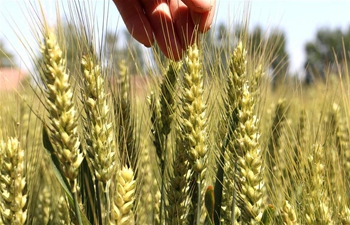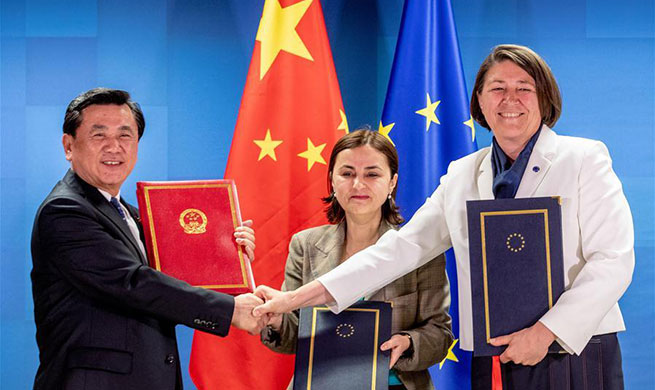WASHINGTON, May 21 (Xinhua) -- An international team led by a Chinese researcher found that a dwarf planet collided with the moon in the early history of the solar system, causing stark differences between the Moon's heavily-cratered farside and the low-lying open basins of its nearside facing the Earth.
The study published this week in the latest Journal of Geophysical Research: Planets showed that in a most likely scenario, a large body about 780 kilometers in diameter smacked into the nearside of the Moon at 22,500 kilometers per hour.
Zhu Meng-Hua from the Space Science Institute at Macau University of Science and Technology and researchers from Germany, the United States and France simulated data gathered by NASA's GRAIL mission in 2012.
The GRAIL mission placed two spacecrafts into the same orbit around the Moon to make high-resolution map of the Moon's gravitational field and to understand its interior structure.
The scientists' new models showed the impact would have thrown up vast amounts of material that would fall back on the Moon's surface, burying the primordial crust on the farside in 5 to 10 kilometers of debris, forming the added layer of crust detected on the farside by GRAIL.
The study suggested the impactor was not likely an early second moon of Earth's that merged with the first moon, as another popular theory proposed.
Whatever the impactor was, it was probably on its own orbit around the Sun when it encountered the Moon, according to Zhu.
The findings also gave an explanation for the differences in isotopes of potassium, phosphorus and rare-earth elements between the surfaces of the Earth and Moon. Researchers said these elements could have come from the giant impact.
"Understanding the origin of the differences between the nearside and the farside of the Moon is a fundamental issue in lunar science," said Steve Hauck, the journal's editor-in-chief.

















